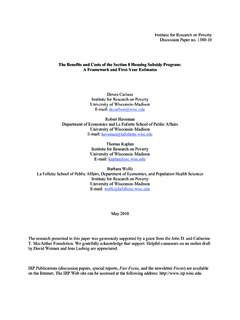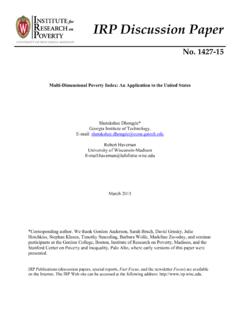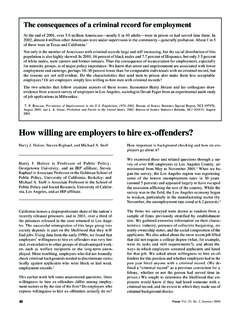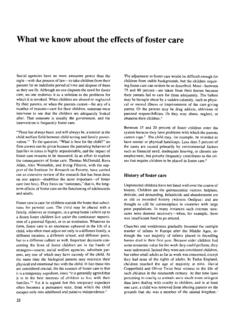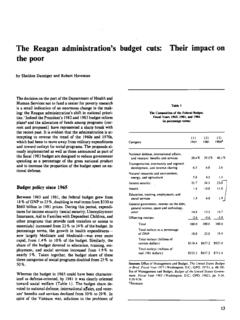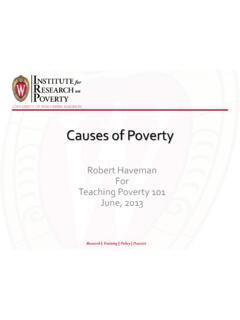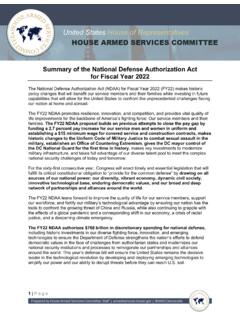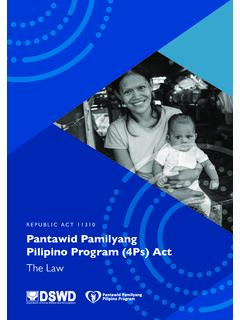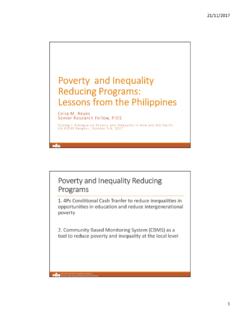Transcription of Poverty Fact Sheet: Poor and In Poor Health
1 Poor and In Poor HealthBottom Line: In the United States, discussion about how to improve Health often turns to either access to care or Health behaviors like smoking or diet. These things matter, but there are also many social and economic factors that compromise Health and impair the ability to make healthful choices in the first place that should be and Poor HealthResearch has shown a link between Poverty and poor Health . People with more income tend to be healthier and live longer. What explains the connec-tion? Many one, lack of care. We know that of the non-elderly popula-tion does not have Health insurance, with low-income families especially vulnerable to being 70% of the uninsured popula-tion is poor or near-poor.
2 The uninsured tend to forego preventative care and to wait until an illness is severe before seeking medical proportion of poor children not re-ceiving any Health care in a given year is twice that of higher-income reason Poverty affects Health is that it often exposes people to unfavor-able living and workplace conditions, stress, and pollution that affect Health across the life course, starting in utero. Brain science and developmental psychology studies suggest that the negative effects of early childhood Poverty , from pre- natal to age 5, might be especially harmful and long lasting. This is likely because the brain grows and changes rapidly during the first few years of Health CareThe Health care system includes private, employer-based coverage, and public coverage.
3 In 2011, more than a hundred million low-income, disabled, and elderly beneficiaries were served by Medicaid and/or Medicare. In addition, another 23 million people were covered by the Veterans Admin-istration, Indian Health Service, and state and local subsidies for hospitals and community Health centers. In the , we spend more money per capita on Health care than similar nations, Health insurance costs more, and many people are uninsured or underinsured. The majority of countries that have much smaller uninsured populations have some sort of nationalized Health insurance. However, the United States is unique in that most insured people have private insurance.
4 About three-quar-ters of those insured have private plans, and two-thirds of them receive insurance from their employers. Since 2000 there has been a steady decrease in employer-based Health insurance insurance coverage, rising costs, and Health expenditures which account for 16% of GDP helped set the stage for Health reform. The Afford-able Care Act (ACA) seeks to decrease the number of un-insured citizens and legal im-migrants, while reducing costs for those insured and reforming private Health insurance market ACA is a federal law that is expected to transform public and private Health insurance coverage, operation of Health care markets, affordability and accessibility of insur-ance, and financing of medical care.
5 The most promising aspect of the Affordable Care Act is its potential to reduce disparities in Health , and in the long run to reduce disparities in Health and earnings potential. Barbara WolfeKey Points Education, occupation, income, and as-sets socioeconomic status or SES are major determinants of Health . Children are especially vulnerable to the negative Health effects of Poverty . Birth to age 5 is critical for development; just a few years of Poverty may negatively affect a child s life course. The has higher rates of child Poverty than many other countries. In 2012, 22% of children in the were poor.
6 As family income increases, the number of families reporting poor Health decreases. Many Health insurance consumers face limited options, high costs, and incomplete coverage. Some 32 million Americans will receive Health insurance coverage if the Afford-able Care Act is fully implemented as originally Fact Sheet: Notes: This chart indicates the number of years beyond age 25 that adults in different income groups can expect to live by their family income (% of federal Poverty level or FPL). FPL is the income threshold at which an individual or family is considered poor. In 2012, it was $23,492 for a family of.
7 National Longitudinal Mortality Study, 1988 fe Expectanc y at Ag e 25 Projected Life Expectancy at Age 25 by Income<100% FPL101-200% FPL201-400% FPL>400% FPLThe Institute for Research on Poverty and the Morgridge Center for Public Service are putting the Wisconsin Idea into action by raising awareness of social issues with a series of fact sheets and by encouraging community involvement among undergraduate to Care Isn t the Only AnswerMany times discussions about the Health of a nation begin with how to improve Health behaviors (reducing smoking, healthful eating, exercise) or how to increase access to Health care in order to reduce the percentage of uninsured citizens.
8 However, many other factors contribute significantly to Health and they are important to factors like unhealthy housing, unemployment, and food insecurity all affect one s Health . The amount of exposure one has to pollution and other biohazards can also lead to poor stress and social isola-tion can lead to conditions like heart disease and asthma. People that are poor or near poor are usually most susceptible to the material factors and psy-chosocial conditions that lead to poor Health . SES and HealthMultiple measures of socioeconomic status (SES) are indepen-dently associated with Health : Education, income, assets, and occupation have indepen-dent and compounding effects over the life course; and Race and SES affect Health in overlapping and indepen-dent differences in Health exist for almost all Health measures.
9 SES differences in Health exist across all nations and across with higher incomes have Health problems too, of course; however, those at the bottom suffer disproportionately poor in childhood affects adult Health , regardless of adult status exposes one to psychosocial and mate-rial conditions that affect the life course, making SES an important determinant of the connection between SES and Health is well established, how SES affects Health remains largely Policy as Health PolicyThere are many social policies that researchers suggest may help reduce Health disparities, such as: Raising the economic status of the poor through increasing the minimum wage and extending the Earned Income Tax Credit, which supports work by providing refundable tax credits to low-wage workers; Strengthening individuals through nutritional interventions, supports to manage stress, and programs to reduce smoking; Providing access to safe, high-quality child care to enable parents to work; Increasing the availability of training and employment programs for adults; Reinforcing the social safety net by providing more aid to jobless workers and more benefits to the poor.
10 And Improving access to essential facilities and services to ensure adequate and secure housing, improve infrastructure, and reduce pollution. While access to medical care is important to Health , there are many social factors that produce poor Health in the first place. Stephanie RobertHow SES and Health Affect Each Other over TimeThis fact sheet was prepared by Dan Simon. For a list of the sources used for this brief and further reading, visit get involved (if you re not already), see for Research on Poverty | 3412 Sewell Social Sciences Bldg. | 1180 Observatory Drive | Madison, WI 53706 | Center for Public Service | Red Gym | 716 Langdon Street | Madison, WI 53706 | Birth /ChildhoodParentalSocioeconomicResources HealthAdolescence /Young AdultEducationalAttainmentHealthElderly RetirementIncomeHealthWork /CareerOccupation& IncomeHealthSource: Stephanie Robert, 2012, Social Policy Is Health Policy.
